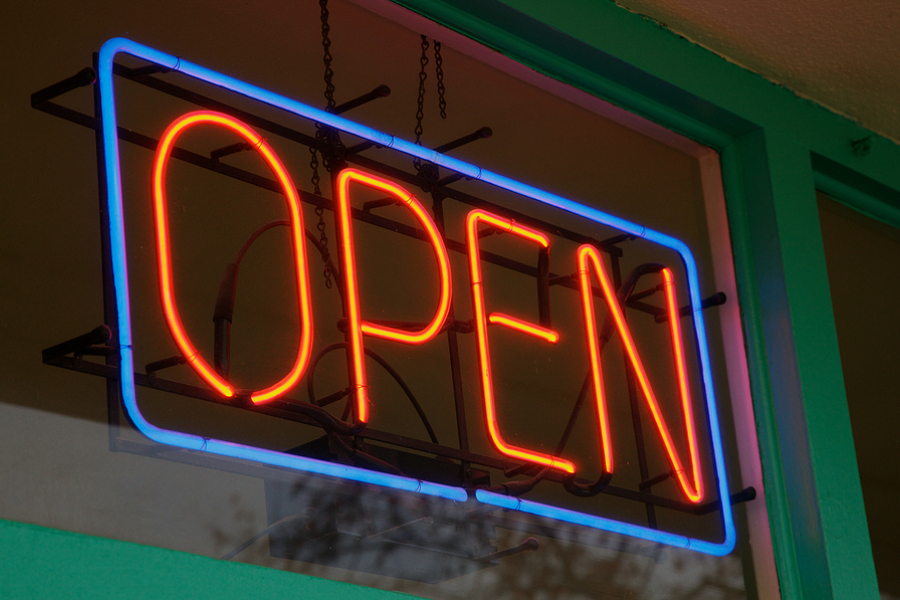
When it comes to retail, effective signage is crucial for attracting customers, communicating key messages, and ultimately driving sales. However, simply having signage is not enough; it is essential to measure its effectiveness to ensure it delivers the desired impact.
In this article, we will explore various methods to assess the performance of retail signage and provide insights for retailers to optimise their visual communication strategies.
Understanding the role of retail signage
Retail signage serves multiple purposes, including:
1. Attracting attention: Effective signage captures the attention of passersby, enticing them to enter the store.
2. Communicating information: Signs convey essential information such as promotions, store hours, and product details.
3. Enhancing brand image: Well-designed signage reinforces brand identity and creates a memorable impression.
4. Guiding customers: Directional signage helps customers navigate the store, enhancing their shopping experience.
Given these roles, it is vital to ensure that your signage is not only visually appealing but also effective in fulfilling these functions.
Key metrics to measure retail signage effectiveness
To measure the effectiveness of your retail signage, consider the following key metrics:
1. Foot traffic
Foot traffic refers to the number of people entering your store. By tracking changes in foot traffic before and after installing new signage, you can gauge its effectiveness in attracting customers. Tools such as footfall counters or infrared sensors can provide accurate data on customer entries.
2. Sales data
Sales data is a direct indicator of signage effectiveness. By comparing sales figures before and after implementing signage changes, you can determine its impact on revenue. Look for correlations between the placement of promotional signs and spikes in sales for advertised products.
3. Customer dwell time
Dwell time is the amount of time customers spend in specific areas of your store. Longer dwell times near certain signage suggest that it successfully captures and holds customer attention. This can be measured using in-store analytics tools and heatmaps.
4. Conversion rate
Conversion rate measures the percentage of visitors who make a purchase. An effective sign should increase conversion rates by encouraging customers to buy. Compare conversion rates during periods with and without the signage to evaluate its impact.
5. Customer feedback
Customer feedback provides qualitative insights into the effectiveness of your signage. Conduct surveys or collect feedback through social media and in-store questionnaires to understand customer perceptions. Ask specific questions about signage visibility, clarity, and attractiveness.
Methods to measure retail signage effectiveness
1. A/B Testing
A/B testing involves comparing two versions of a sign to see which performs better. For instance, you could display two different promotional signs in separate store sections and track their respective impacts on sales and customer engagement. This method allows you to identify the most effective design and messaging.
2. In-store analytics
In-store analytics tools, such as video analytics and heatmaps, provide detailed data on customer behaviour. These tools can track foot traffic patterns, dwell times, and interaction with signage. By analysing this data, you can assess which signs are most effective and adjust your strategies accordingly.
3. Digital signage metrics
For digital signage, software solutions offer comprehensive metrics, including the number of views, interaction rates, and content playback statistics. These metrics provide real-time feedback on the effectiveness of your digital displays.
4. Sales tracking
Regularly track sales data to identify trends and correlations with signage changes. Use POS (Point of Sale) systems to monitor sales of products highlighted in your signage. This data can reveal the direct impact of your signs on purchasing behaviour.
5. Customer surveys
Surveys are a direct method to gather customer opinions on your signage. Ask questions about the sign’s visibility, message clarity, and overall appeal. Customer insights can guide you in making necessary adjustments to improve effectiveness.
Best practices for effective retail signage
To ensure your signage is effective, follow these best practices:
1. Keep it simple
Clear, concise messages are more likely to capture attention and be remembered. Avoid clutter and focus on a single, compelling message.
2. Use high-quality graphics
High-quality images and graphics enhance the visual appeal of your signage. Ensure that your design is professional and aligns with your brand identity.
3. Ensure visibility
Place signs in high-traffic areas and at eye level to maximise visibility. Consider lighting and other factors that might affect how well the sign can be seen.
4. Update regularly
Regularly update your signage to keep it fresh and relevant. Outdated signs can diminish credibility and fail to attract attention.
5. Test and iterate
Continuously test different signage designs and placements or locations. Use the insights gained from A/B testing and analytics to refine your strategies.
Conclusion
Measuring the effectiveness of retail signage is crucial for optimising its impact on customer engagement and sales. Implementing methods like A/B testing, in-store analytics, and customer surveys further enhances this understanding. Adhering to best practices, such as keeping messages simple, using high-quality graphics, ensuring visibility, updating regularly, and testing different approaches, ensures that your signage remains effective and relevant.
For businesses looking to enhance their retail signage, New Wave Display offers comprehensive solutions, including stage backdrops and pull-up banners in Singapore. Contact them today to elevate your visual communication strategy and attract more customers to your store.




